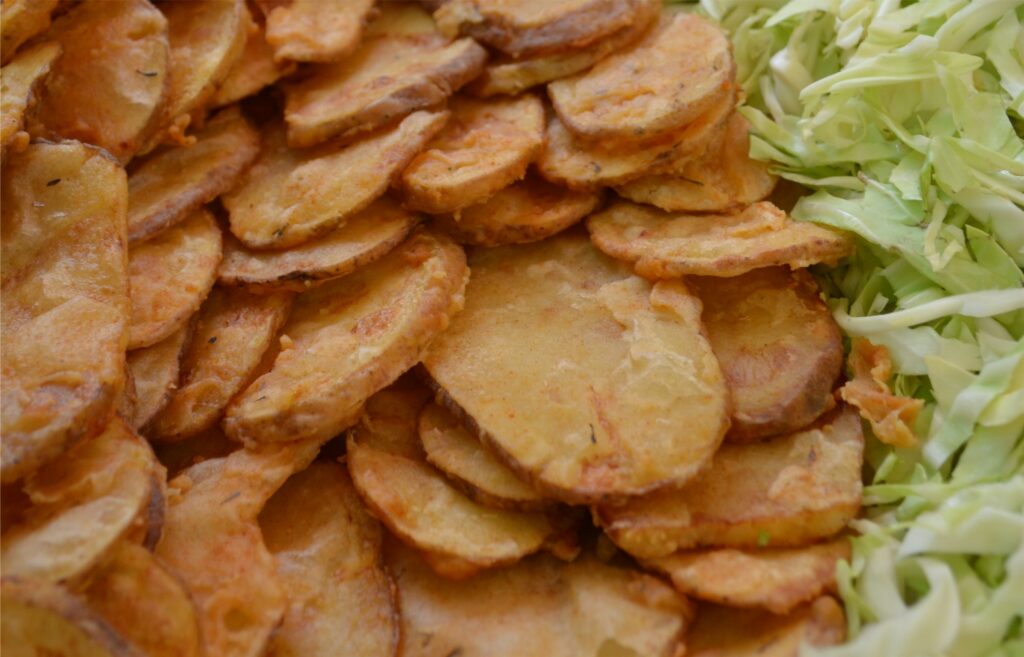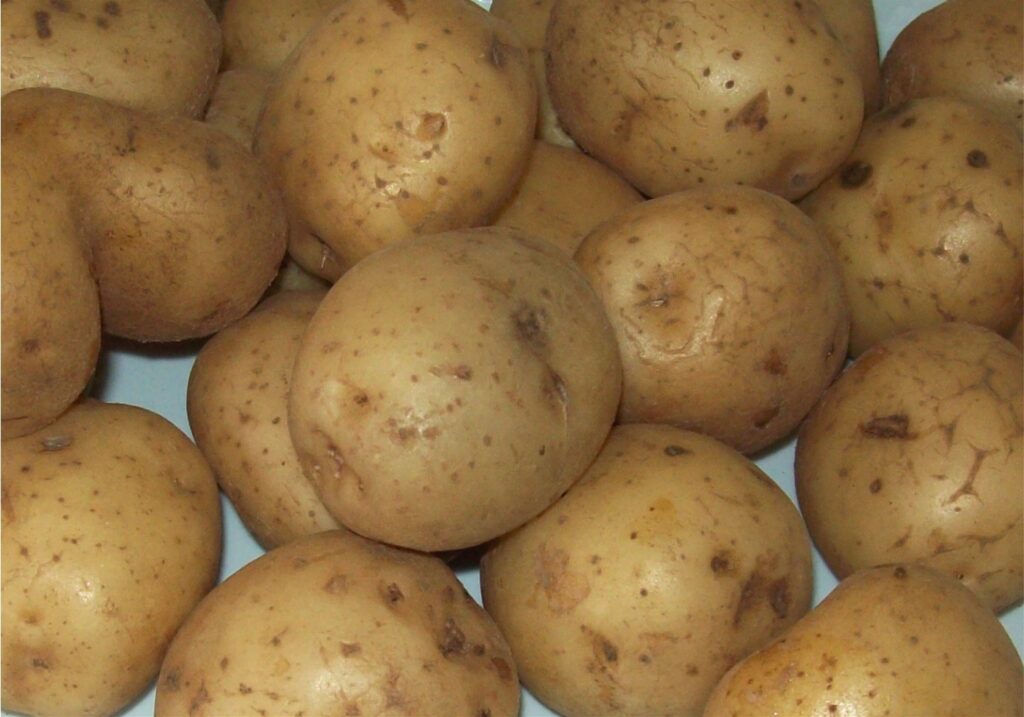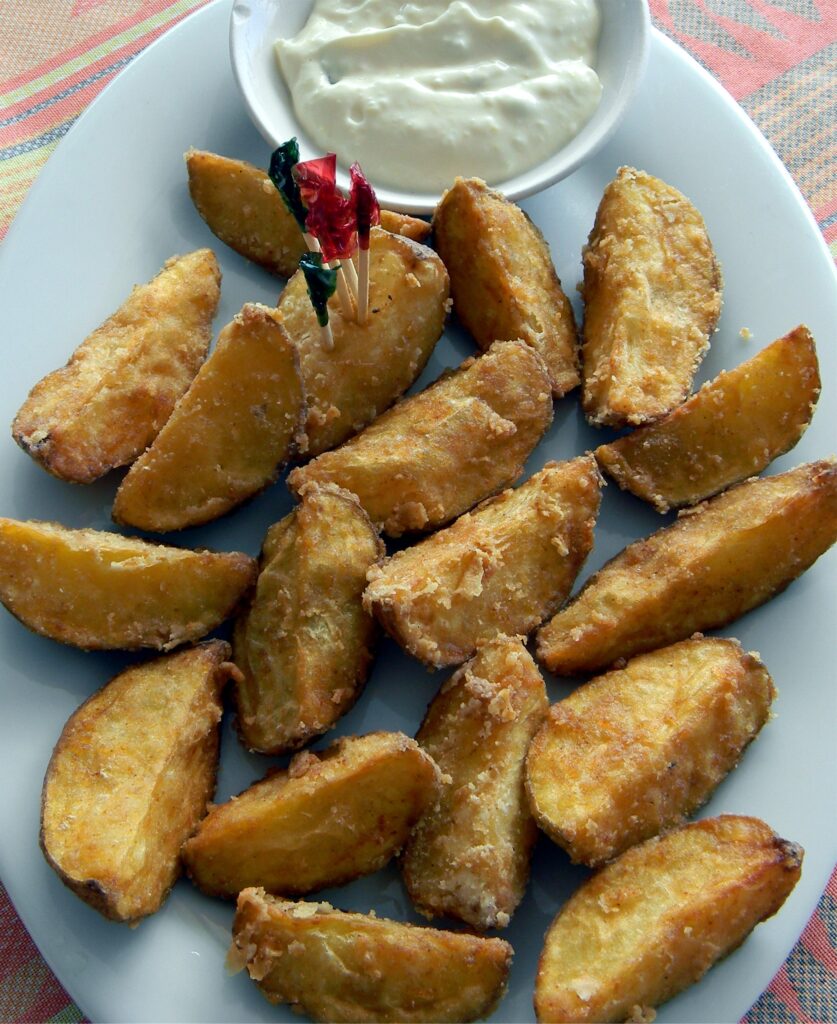Text and Photos by Henrylito D. Tacio
Don’t mistake potato with sweet potato. Both are root crops but they differ. To distinguish it from sweet potato, the word “Irish” is sometimes added to call that potato now known for French fries and chips. In the Philippines, Filipinos call it patatas while sweet potato is camote.
Potatoes are the world’s fourth-largest food crop after corn, wheat and rice. Although it is known as “poor man’s food,” potatoes are one of nature’s perfect foods. That was how Dr. Jackie Puhl, an exercise physiologist who once worked with the U.S. Olympic Committee in Colorado, and Nancy Clark, author of The Athlete’s Kitchen, described the disdained potato.
Eating potatoes, they say, is an excellent way to get your carbohydrates. It releases energy into your body more slowly than the simple sugars. Potatoes have a lot more nutritional value than the others.
Widespread dry malnutrition (maramus) and wet malnutrition (kwashiorkor) infesting the countryside and urban poor areas may just well be prevented from getting worse. Shattering myths that potato is fattening and has little nutritional value, recent studies revealed that the potato is 99.9% fat-free, containing only 110 calories. What’s more, studies point out that a surfeit of potato diet will not create an obese population.
The potato falls in the category of starch carbohydrates (the other one is sugar). Starch, or polysaccharide, contains around 2000 glucose units taking a long time for the body to break down into glucose, unlike the insulin reaction in simpler sugars. Thus, unlike sugar, the potato is not fattening.
“By itself, potatoes are not fattening (and the feeling of satiety that comes from eating potatoes can actually help people to control their weight),” said the Rome-based United Nations Food and Agriculture Organization (FAO).
However, preparing and serving potatoes with high-fat ingredients raises the caloric value of the dish. “Since the starch in raw potato cannot be digested by humans, they are prepared for consumption by boiling (with or without the skin), baking or frying,” FAO points out.
Each preparation method affects potato composition in a different way, but all reduce fiber and protein content, due to leaching into cooking water and oil, destruction by heat treatment or chemical changes such as oxidation.
Baked potatoes, which have become popular not only in the United States but in the Philippines as well, average 93 calories per 100 grams and are low in fat. In comparison, 100 grams of potato chips total 568 calories and have much higher fat and carbohydrates content. There’s more fat content to it if you eat French fries.
Potatoes are purportedly also a valuable protein source. On a dry weight basis, the protein content of potato is similar to that of cereals and is very high in comparison with other roots and tubers.
“Potatoes are rich in several micronutrients, especially vitamin C – eaten with its skin, a single medium-sized potato of 150 grams provides nearly half the daily adult requirement (100 milligrams),” says the UN food agency.
The potato is also discovered to be full of potassium mineral which is good for heart maintenance and other muscle tissues. Also, it retains 70 percent or more of its nutrients depending on the cooking process done. Boiling it unpeeled or cooking it in microwave ovens were considered the best methods to retain its nutrients.
Potatoes also contain dietary antioxidants, which may play a part in preventing diseases related to ageing, and dietary fiber, which benefits health.
But there’s more to potatoes than just food. “By some accounts, Marie Antoinette liked the blossoms (of potato) so much that she put them in her hair,” wrote Charles C. Mann for Smithsonian Magazine. “Her husband, Louis XVI, put one in his buttonhole, inspiring a brief vogue in which the French aristocracy swanned around with potato plants on their clothes.”
In the past, the potato has been considered as a medicinal plant. To carry a raw potato in the pocket was an old-fashioned remedy against rheumatism that modern research has proved to have a scientific basis.
Ladies in the olden times had special bags or pockets made in their dresses in which to carry one or more small raw potatoes for the purpose of avoiding rheumatism. Successful experiments in the treatment of rheumatism and gout have in the last few years been made with preparations of raw potato juice.
In cases of gout, rheumatism and lumbago, the acute pain is much relieved by fomentations of the prepared juice followed by an application of liniment and ointment. Sprains and bruises have also been successfully treated by the potato-juice preparations.
Hot potato water has in years past been a remedy for some forms of rheumatism. A noted potato remedy for rheumatism was made by cutting up the tubers, infusing them together with the fresh stalks and unripe berries for some hours in cold water, and applying in the form of a cold compress. The potatoes, however, were not peeled.
Starch from potato is also widely used by the pharmaceutical, textile, wood and paper industries as an adhesive, binder, texture agent and filler, and by oil drilling firms to wash boreholes. Potato starch is a 100% biodegradable substitute for polystyrene and other plastics and used, for example, in disposable plates, dishes and knives.
Just who was the man who discovered the glorious find of the fields? He was Francisco Pizzaro, who conquered the Incas in South America in 1530 (the potato was a principal crop there for as early as 500 BC). But this “sinister-looking” vegetable was viewed with suspicion, associating it with leprosy and syphilis.
Scots abhorred it because it was not mentioned in the Bible, Swedes regarded it as abominable and unfit for humans, and Russians in the 18th century died of famine rather than eat the lowly repugnant potato. Disdain for it caused the monarchy of Prussia to issue a directive ordering the cutting off of peasants’ ears and noses if they refused to eat it.
When Scotch-Irish immigrants started to settle in Maine in 1791, they brought potatoes along into what was to become one of the United States. However, it was American president Thomas Jefferson who introduced pomme frites to his people after his return from a trip to Paris. Now as American as apple pie, they are promoted as “American fries” at MacDonald’s and similar eateries in other parts of the world. (But in the Philippines, they are still called “French fries”.)
In 1853, railroad magnate Commodore Cornelius Vanderbilt complained that his potatoes were cut too thick and sent them back to the kitchen at a fashionable resort in Saratoga Springs, NY. To spite his haughty guest, Chef George Crum sliced some potatoes paper thin, fried them in hot oil, salted and served them. To everyone’s surprise, Vanderbilt loved his “Saratoga Crunch Chips,” and potato chips have been popular ever since.
Introduced in the Philippines by the Spaniards, potatoes did not replace rice as the country’s staple. Today, potato is grown mostly in Benguet, which accounts for more than 60 percent of the country’s total production. The other major producers are Davao del Sur, Mountain Province, and Bukidnon. — ###




